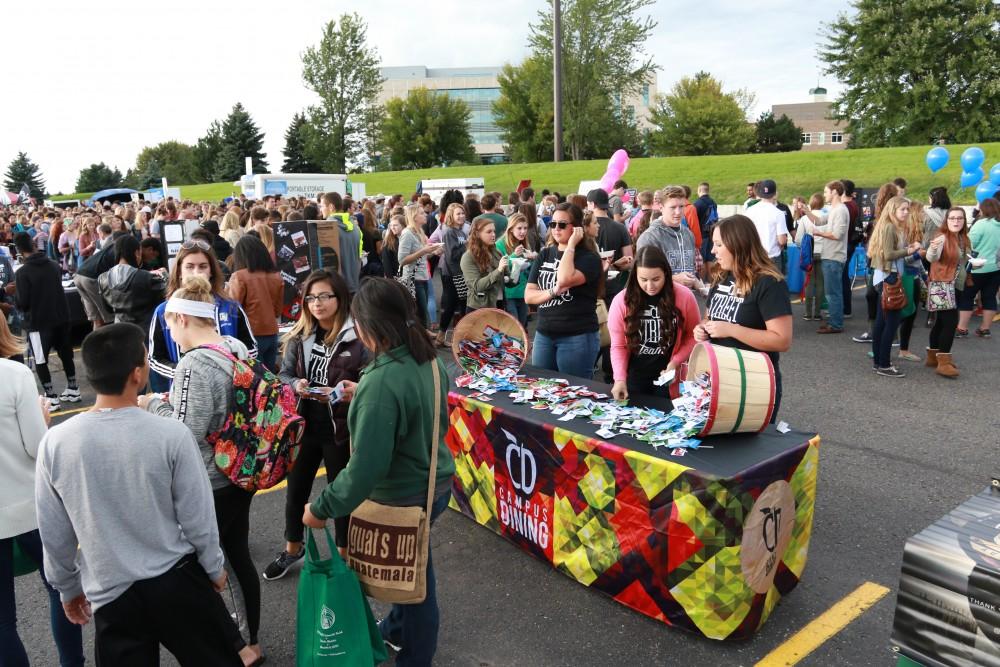GVSU named “most improving college” by Time magazine

GVL/Kevin Sielaff Campus Dining gives out free candy to people passing by their stand. Campus Life Night takes place Sept. 13, 2015 on the grounds of parking lot H at Grand Valley’s Allendale campus.
Jan 25, 2016
Anyone who’s been at Grand Valley State University for more than a year will have noticed the university’s tremendous growth in student enrollment, academic buildings, and even dining options. Even more important than these, though, is GVSU’s rapid surge in graduation rates.
According to a study by Time magazine, GVSU was named one of the “most improved colleges in the U.S.” in terms of graduation rates for all students. Among the 14 colleges listed, GVSU was ranked at No. 8.
The most recent data from Office of Institutional Analysis shows that four-year graduation rates have increased nearly 20 percent since 1990, when only 15.8 percent of students graduated. Growth over this same period was similar among the five-year and six-year graduation rates.
Philip Batty, director of the Office of Institutional Analysis, said the growth GVSU is experiencing is uncommon and much stronger than most colleges.
“The degree of improvement at GVSU is unusual,” Batty said. “Most have not done it this quickly.”
One of the ways in which GVSU retains students is through the CLAS Academic Advising Center. There, students can meet one-on-one with advisers to seek guidance and plan out their academic journey.
Betty Schaner, director of the CLAS Academic Advising Center, said it’s normal for the office to work with more than 300 students in a single week. During registration week, the number of appointments can reach between 500 and 600.
“Often, things don’t go as well as expected and we’re here to provide a safety net for students who have a rough semester,” Schaner said. “We discuss what went wrong, identity steps to change actions and behaviors, share information about potential majors and minors that might be of interest, review the student support resources and tutoring options and hopefully set them on a better pathway toward a successful semester.”
Graduation rates at GVSU are also on the rise for underrepresented minority students.
According to data from the Office of Institutional Analysis, minority students are nearly 25 percent less likely than white students to graduate within four years. For a six-year graduation, the odds of a minority student graduating is 85 percent that of a white student.
The data also reveals that out of all Michigan universities, GVSU ranks No. 2 for parity between minority and white student graduation rates.
Connie Dang, director of the Office of Multicultural Affairs at GVSU, said the OMA offers a variety of retention programs aimed at supporting students of diverse backgrounds.
“Consistent studies have demonstrated the impact of peer group support on students,” Dang said. “Peer group help offers emotional, social and academic support, and meets the needs not met by other resources on campus.”
Within the past 10 years, Schaner said GVSU has dramatically increased its focus on student success at all levels. Initiatives include professional advising support in all colleges, orientation programs for new freshmen, tutoring and success workshops, as well as curricular enhancements, Schaner said.
To schedule an appointment with the CLAS Academic Advising Center, call (616) 331-8585 or stop by the office located in C-1-140-MAK. For more information about services offered by the Office of Multicultural Affairs, go to www.gvsu.edu/oma.

























